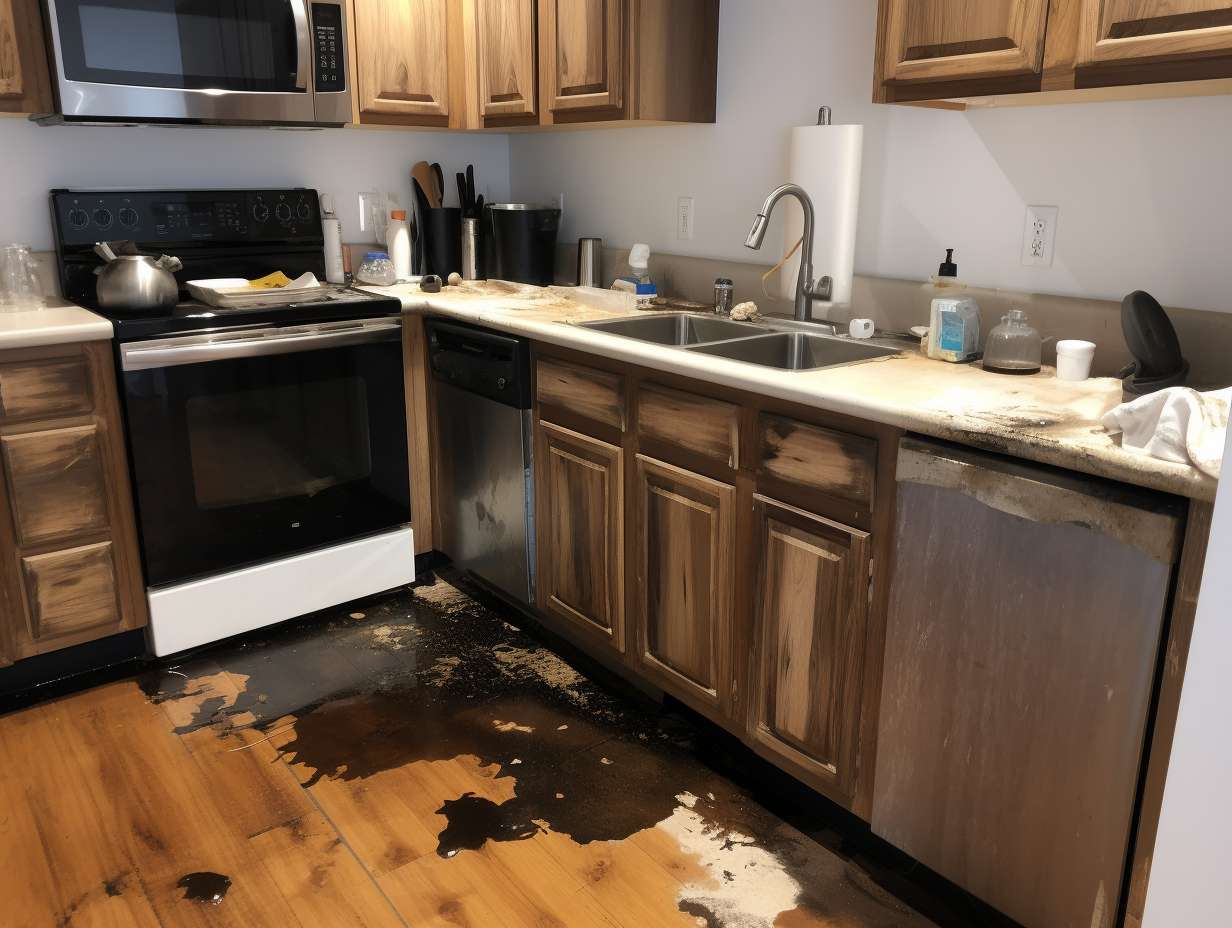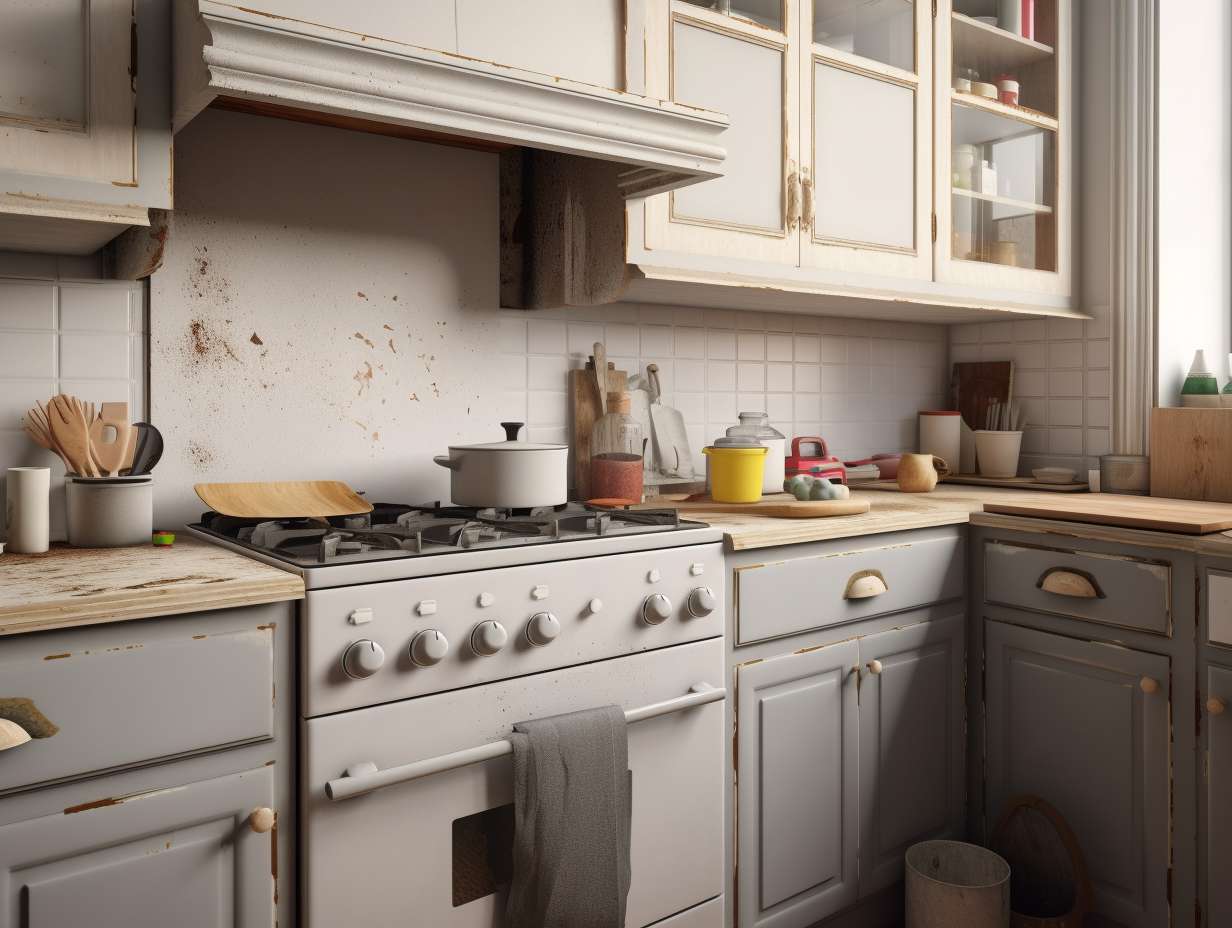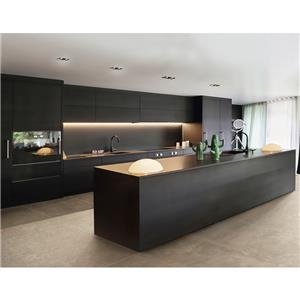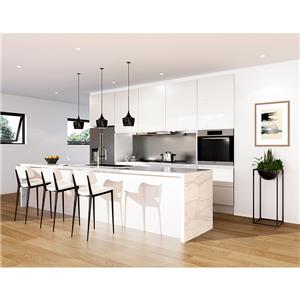how to measure for kitchen cabinets
When using a steam cleaner in your kitchen, you may find that the steam can cause damage to your kitchen cabinets. If you discover that your kitchen cabinets have been damaged by steam, do not worry, as this type of damage is usually fixable. In this article, I will outline some methods for repairing steam-damaged kitchen cabinets.

1.Clean the Damaged Area
Firstly, you will need to clean the cabinet surface. Use a mild cleaner and a damp cloth to gently wipe the damaged area, ensuring the surface is completely dry. This will help you better assess the extent of the damage and prepare for repairs.
2.Repair the Surface with Sandpaper
If the damage caused by steam is only a surface flaw, you can use fine sandpaper to smooth it out. Use 400 to 600-grit sandpaper and gently rub the damaged surface along the grain of the wood. Be careful not to sand too much of the cabinet surface, as this could cause further damage.
3.Re-Paint or Re-Stain
Once you have smoothed out the damaged surface, you can re-paint or re-stain it to repair the steam damage. Before re-painting or re-staining, ensure that the cabinet surface is completely dry, or the paint or stain will not adhere evenly.
4.Replace Damaged Cabinet Components
If the steam damage is too severe to repair, and the cabinet cannot be salvaged, you may need to replace the damaged components of the cabinet. This may include replacing doors, drawers, and side panels. Before purchasing new components, ensure that you have measured the cabinet accurately and purchase new components that match the existing parts.
5.Prevention
To prevent steam damage, you can take some preventative measures. Firstly, when using steam, keep your distance from the cabinet to reduce the direct impact on the cabinet surface. Secondly, you can use waterproof mats on top of the cabinet to reduce the impact of steam on the cabinet.
In conclusion, if your kitchen cabinets have been damaged by steam, there are several methods that you can use to repair the damage. By following the steps outlined above, you can repair the damage caused by steam and prevent it from happening again in the future.

Steam damage on kitchen cabinets is a common problem, particularly if you use a steam cleaner for cleaning the kitchen. Steam is an effective way to clean and sanitize surfaces, but if not used properly, it can cause damage to the wood surface of the cabinets. Steam damage on kitchen cabinets can range from minor surface flaws to severe damage that requires replacement of the entire cabinet.
One of the most important steps in repairing steam damage on kitchen cabinets is to clean the damaged area. Use a mild cleaner and a damp cloth to gently wipe the damaged area, ensuring the surface is completely dry. This will help you better assess the extent of the damage and prepare for repairs.
After cleaning the damaged area, you can begin repairing the surface with sandpaper. If the damage caused by steam is only a surface flaw, you can use fine sandpaper to smooth it out. Use 400 to 600-grit sandpaper and gently rub the damaged surface along the grain of the wood. Be careful not to sand too much of the cabinet surface, as this could cause further damage.
Once you have smoothed out the damaged surface, you can re-paint or re-stain it to repair the steam damage. Before re-painting or re-staining, ensure that the cabinet surface is completely dry, or the paint or stain will not adhere evenly. You can also use wood filler to fill in any cracks or holes that may have been caused by the steam damage.
If the steam damage is too severe to repair, you may need to replace the damaged components of the cabinet. This may include replacing doors, drawers, and side panels. Before purchasing new components, ensure that you have measured the cabinet accurately and purchase new components that match the existing parts.
To prevent steam damage in the future, there are several preventative measures that you can take. Firstly, when using steam, keep your distance from the cabinet to reduce the direct impact on the cabinet surface. Secondly, you can use waterproof mats on top of the cabinet to reduce the impact of steam on the cabinet. Additionally, you can use a lower steam setting or reduce the amount of time that you apply steam to the cabinet surface.
It is important to note that prevention is key when it comes to steam damage on kitchen cabinets. By taking preventative measures, you can avoid the need for costly repairs or replacement of the entire cabinet. If you do experience steam damage on your kitchen cabinets, it is important to address it as soon as possible to prevent further damage and to ensure that the cabinets remain in good condition.
In conclusion, steam damage on kitchen cabinets can be frustrating and unsightly, but it is usually fixable. By following the steps outlined above, you can repair the damage caused by steam and prevent it from happening again in the future. Remember to take preventative measures to avoid steam damage and to address any damage as soon as possible to prevent further problems.
FAQ:
1.How do you remove steam marks from kitchen cabinets?
To remove steam marks from kitchen cabinets, begin by wiping down the cabinets with a damp cloth. Next, make a paste with baking soda and water and apply it to the affected area. Leave the paste on for 10 minutes and then wipe it off with a clean damp cloth. If the steam marks still remain, mix equal parts white vinegar and water and use a soft cloth to rub the mixture onto the cabinets. Finally, rinse the cabinets with a clean damp cloth and dry them thoroughly.
2.How do you fix steam damage on wood cabinets?
To fix steam damage on wood cabinets, begin by wiping down the affected area with a damp cloth. Next, mix equal parts white vinegar and water and use a soft cloth to rub the mixture onto the cabinets. Allow the mixture to sit for 15 minutes and then wipe it off with a damp cloth. If there is still damage, mix equal parts baking soda and water to create a paste and apply it to the area. Leave it on for 10 minutes and then wipe it off with a damp cloth. Finally, dry the cabinets thoroughly.




